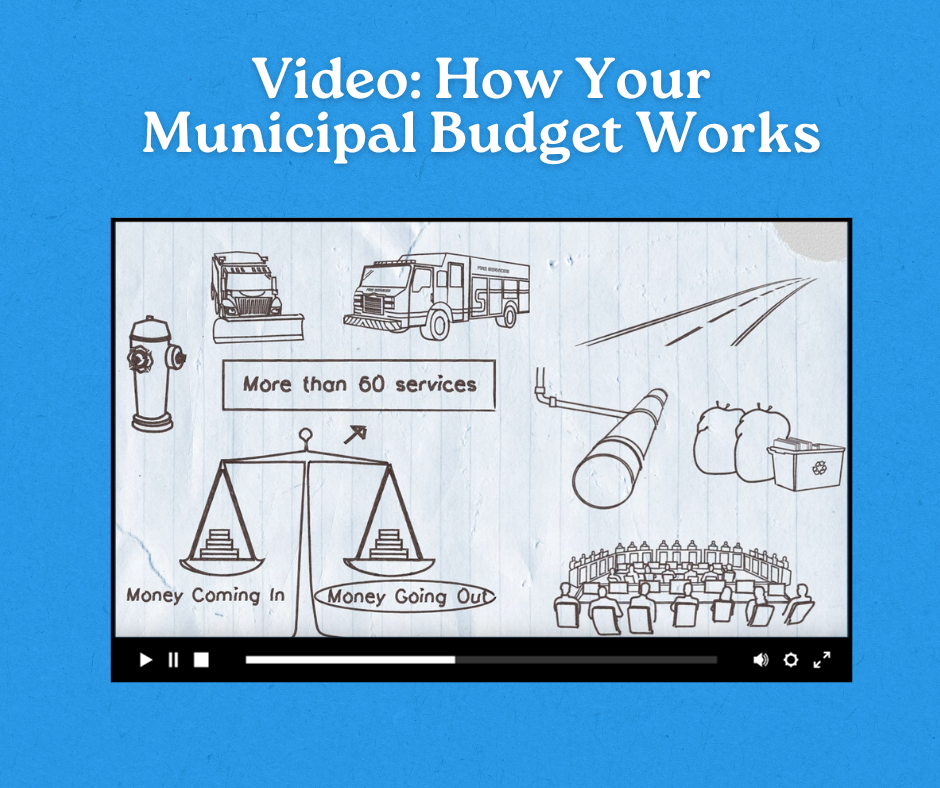
The budgeting process allows municipalities to prioritize projects, programs and service levels based on anticipated revenue and expenses. In Callander, one of our primary sources for budget planning is our Strategic Plan, which helps guide us to determine what the priorities are each year. More information about our Strategic Plan is available on our Plans and Strategies Page. Typically, a municipality's annual budget routinely consists of 2 components:
Budgets are "forward-looking" documents. They report a municipality's planned revenue and the cost of public services for an annual or multi-year period (Source: Ontario.ca).

For the downloadable PDF about how Reserves and Reserve Funds Work, click here.
Reserve funds are a lot like a savings account for a Municipality. Reserves are typically part of an overall strategy for funding operating programs and projects. These funds help offset unexpected expenses or revenue shortfalls. Reserves and reserve funds are an important tool for a municipality's long-term financial sustainability. Setting money aside for unavoidable events (like floods) and for capital projects (like road repairs) reduces the need for long-term borrowing or imposing sudden tax increases on current or future tax-payers. However, just like a regular savings account, when you take money out of reserves it also needs to be returned at a later time.
Schedule A2 - Reserve and Reserve Funds 2023 - AMENDED
By-law 2023-1806 - To Adopt a Reserve and Reserve Fund Policy
By-law 2023-1806 - Schedule A - Policy 014 - Reserve and Reserve Fund Policy
By-law 2023-1806 - Schedules B and C - Policy 014 - Reserve and Reserve Fund Policy
The Council of the Corporation of the Municipality of Callander adopts two annual budgets by by-law each year: a General Ratepayers’ Budget and a Water & Wastewater Budget.
How will the taxation increase affect me personally?
What are the contributing factors that resulted in a taxation increase?
There are two components to calculating municipal taxes:
If the assessed value goes up, there is less impact on the tax rate. If the assessed value goes down, or remains the same, there may be a need for the tax rate to increase in order to provide the expected level of service.
How will the taxation increase affect me personally?
|
MPAC Assessed Value |
Annual Amount Increase |
Monthly Cost Increase |
|
$100,000 |
$51.39 |
$4.28 |
|
$150,000 |
$77.09 |
$6.42 |
|
$200,000 |
$102.78 |
$8.57 |
|
$250,000 |
$128.48 |
$10.71 |
|
$300,000 |
$154.17 |
$12.85 |
|
$350,000 |
$179.87 |
$14.99 |
|
$400,000 |
$205.56 |
$17.33 |
|
$450,000 |
$231.26 |
$19.27 |
|
$500,000 |
$256.96 |
$21.41 |
|
$550,000 |
$282.65 |
$23.55 |
What are the contributing factors that resulted in a taxation increase?
No assessment increases from MPAC
Cost of Living
Strategic Objectives
Capital Asset Management Plan
Financial statements are "backward-looking" documents. They report on the actual resources used by the municipalities and the full cost of the services delivered to the public in that year.
The municipality's financial statements at the end of the year may differ from their original budget for several reasons:
Long-term financial planning considers a municipality's long-term costs and investments over a multi-year period (ex. 10 years) and considers things like:
Just like personal financial planning, it is important to plan for upcoming expenses and save for them gradually, rather than having huge expenses come up all at once (Source: Ontario.ca).
2023 Consolidated Financial Statements
2022 Consolidated Financial Statements
December 31, 2021 Financial Statements - Callander
Report on 2023 Council Honoraria and Planning Committees Expenses
Municipality of Callander Drinking Water System Financial Plan (2020-2026)